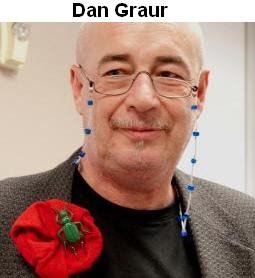As most of you know by now, Stephen Meyer has written a new anti-evolution book where he criticizes the expert scientific opinion on the Cambrian Explosion. He says that the experts are all wrong and the evidence shows that evolution is impossible. The only reasonable alternative is that god(s) made the primitive animals. Meyer has an undergraduate degree in physics and earth science (1981) and got a Ph.D. in history and philosophy of science ten years later (1991). He is not a scientist and he is not an expert on evolution.
Casey Luskin has a Master's degree in earth sciences but later on he got a law degree and he is primarliy a lawyer. He is not a scientist and he is not an expert on evolution.
David Klinghoffer is a writer. He is not a scientist and he is not an expert on evolution.
Nick Matzke is a graduate student who is finishing up his Ph.D. in evolutionary biology. He is a scientist and he is an expert on evolution. He is also an expert on Intelligent Design Creationism.
Nick Matzke wrote a long review of Darwin's Doubt—a book written by a philosopher [Meyer’s Hopeless Monster, Part II].
Casey Luskin, a lawyer, took it upon himself to critique Matzke's review [How "Sudden" Was the Cambrian Explosion? Nick Matzke Misreads Stephen Meyer and the Paleontological Literature; New Yorker Recycles Misrepresentation]. Luskin says,
Since Matzke published his review, The New Yorker reviewed Meyer's book. Gareth Cook, the science writer who wrote the piece, relied heavily on Matzke's critical evaluation, even though Matzke is a graduate student and not an established Cambrian expert. Cook uncritically recycled Matzke's claim that the Cambrian explosion took "many tens of millions of years," ...Do you see the irony? Meyer is a philosopher and Luskin is a lawyer but poor old Nick is just a graduate student about to get a Ph.D. in evolutionary biology. Matzke is not an established Cambrian expert. Neither are Meyer or Luskin but that doesn't seem to stop them from criticizing Matzke and all other evolutionary biologists and all paleontologists.1
David Klinghoffer just can't wait to contribute his two cents. Klinghoffer isn't a scientist and he certainly isn't an expert on paleontology but that doesn't mean he can't have an opinion [Regarding Matzke, Coyne, and Darwin's Doubt, a Reader Asks].
That is a good question. Casey Luskin has already demonstrated what a non-paleontologist Matzke is.How could non-scientist Klinghoffer possibly know whether lawyer Casey Luskin had made a good case against evolutionary biologist Nick Matzke? Does Klinhoffer realize that Luskin is a lawyer, not a paleontologist?
Do you wonder why we call them IDiots?
1. My irony meter survived but it was touch-and-go for a minute or two.

















































